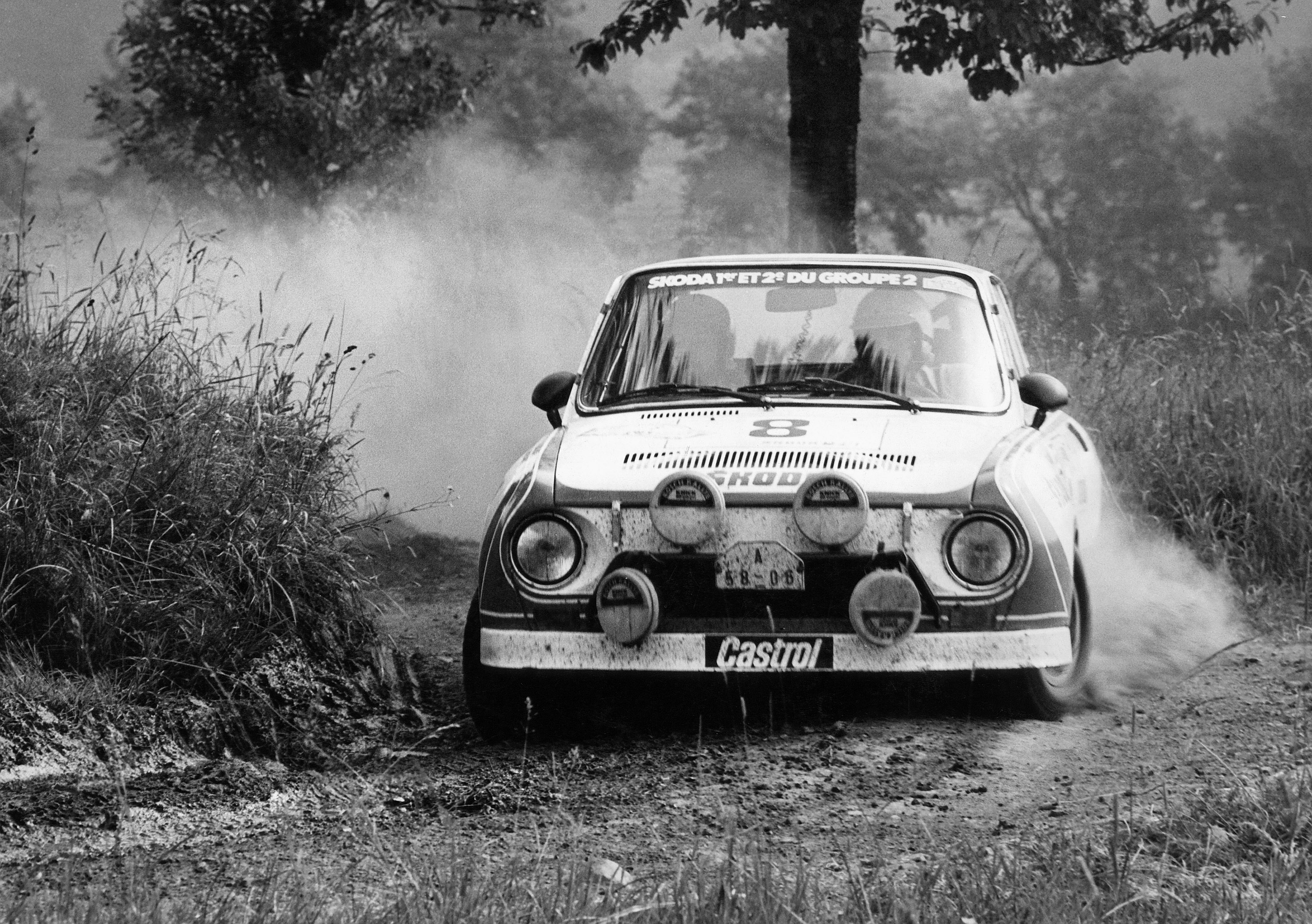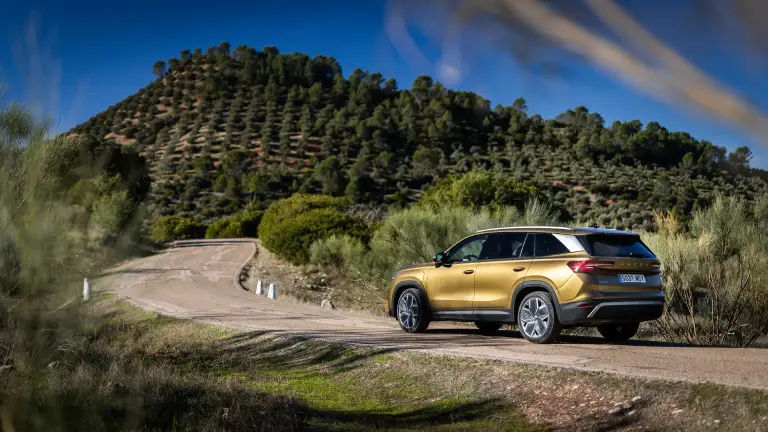› ŠKODA is since 1901 an established brand in motorsport on two and for wheels and has been winning on race circuits and rally tracks around the globe
› The motorsport roots of the Czech brand lie in the famous motorcycle races of the early 20th century
› In the 1970s and ’80s, the ultralight rear-engine racer ŠKODA 130 RS drove to a series of victories on race tracks
› ŠKODA FABIA R5 and ŠKODA FABIA R5 evo continue the success story of the milestones in ŠKODA Motorsport’s history
ŠKODA’s motorsport roots reach back more than 118 years. On June 1901, Narcis Podsedníček entered the long-distance race from Paris to Berlin for the first time, riding a L&K motorcycle built by ŠKODA’s founding fathers Laurin and Klement. What had begun in 1901 on two wheels, continued in the 1970s and ’80s with a worldwide series of victories on race circuits and rally tracks. In 2019, the ŠKODA FABIA R5 evo continued the success story of ŠKODA Motorsport with more victories.
Early years and first victories
The love of motorsport goes all the way back to the company’s founding fathers Václav Laurin and Václav Klement (L&K). Just two years after the start of motorcycle production at L&K, they trusted racer Narcis Podsedníček with their new L&K single-cylinder motorcycle and, in 1901, sent him to the long-distance race from Paris to Berlin. Podsedníček was one of ten drivers who competed in the category of motorcycles and three-wheelers. On his L&K bike he reached the finish line first. He arrived in Berlin on 30 June 1901 at three o’clock in the morning – before the official timing had even been set up. A policeman testified his arrival time, but nevertheless he was disqualified. At the end, only four French drivers with three-wheelers from De Dion-Bouton where classified, but the moral winner was Podsedníček.
However, Laurin and Klement saw their economic future on four wheels. From 1905 onwards their cars continued the success story. Besides victories at hill climbs and endurance races, the Laurin & Klement FCS, powered by a four-cylinder engine delivering 95 bhp, set a speed record of 118.72 kilometres per hour at Brooklands race circuit in the UK.
1936 – 1986: ŠKODA established as force to be reckoned in motor racing
During the period between the two wars, ŠKODA cars impressed technically with their central tube frame. In January 1936, a ŠKODA POPULAR SPORT took second place in the category at the challenging Monte-Carlo Rally. The ŠKODA RAPID repeated this success one year later. After World War II, a two-seater sports car based on the ŠKODA 1101 production model impressed on the race track at Spa-Francorchamps, driven by Czech and other European drivers. The new car was as well successful at the Monte-Carlo Rally and the gruelling Tour d’Europe road rally. Later the ŠKODA OCTAVIA, presented in 1959, went from success to success.
The ŠKODA 1000 MB marked a new chapter for the brand in the 1960s. In 1964, the first ŠKODA with rear-wheel drive and rear-mounted engine again represented a new technological approach. With his successor ŠKODA 130 RS, Norwegian rally driver John Haugland achieved a lot of remarkable results. The car, because of his technical layout given the affectionate nickname ‘Porsche of the East’, won its class at the Monte-Carlo Rally and the Acropolis Rally (1977). The ŠKODA 130 RS also won the European Touring Car Championship 1981 and achieved class wins at the RAC Rally in 1985 and 1986. Again, John Haugland was the most successful driver behind the steering wheel of the ŠKODA 130 LR.
1990s: Further success in the World Rally Championship
ŠKODA’s presence in modern motorsport started with the Monte-Carlo Rally of 1991. Pavel Sibera/Petr Gross, driving a ŠKODA FAVORIT, won F2 class that and the following three years (1991-1994). In 1991, the ŠKODA FAVORIT also won the World Rally Championship’s Cup for vehicles featuring engines with less than two litre capacity and one driven axle. In 1996, the new ŠKODA FELICIA Kit Car, with Swedish professional Stig Blomqvist at the wheel, achieved a remarkable third place overall at the RAC Rally.
With the ŠKODA OCTAVIA WRC, introduced in 1997, the works team entered the FIA World Rally Championship (WRC) on top level for the first time. The all-wheel-drive vehicle with a 300 bhp turbo engine achieved an outstanding third place overall at the rough Safari Rally Kenya of 2001. From 2003 to 2007, the successor model, the ŠKODA FABIA WRC, also made a big impact.
ŠKODA FABIA SUPER 2000 and ŠKODA FABIA R5 writing motorsport history
In 2009 the ŠKODA FABIA SUPER 2000 took the rally scene by storm – until then, no rally car had been more successful in this category. Between 2009 and 2014 the car won 50 national and international titles worldwide. The Czech duo Jan Kopecký/Pavel Dresler won the FIA European Rally Championship (ERC) in 2013. The FIA Asia-Pacific Rally Championship (APRC) was won by teams driving a ŠKODA FABIA SUPER 2000 three years in a row (2012 – 2014).
The ŠKODA FABIA R5 – which had been officially approved (homologated) for motorsport by the International Automobile Federation (FIA) on 1 April 2015 – already drove to its first international success in its first season. Pontus Tidemand/Emil Axelsson won for ŠKODA again the FIA Asia Pacific Rally Championship. On top of that, ŠKODA teams took five national titles.
In 2017, ŠKODA Motorsport factory crew Pontus Tidemand/Jonas Andersson became the FIA World Rally Championship’s WRC 2 Drivers’ and Co-Drivers’ Champions, ŠKODA Motorsport also won the WRC 2 Team Championship. Czech Champions Jan Kopecký/Pavel Dresler were the spearhead of in total 14 crews winning their respective country’s national titles. Furthermore, the FIA Asia-Pacific Rally Championship (APRC), the FIA South American Rally Championship (CODASUR) and the FIA African Rally Championship (ARC) were won by teams competing in a ŠKODA FABIA R5.
And 2018 was even more successful for ŠKODA Motorsport. Now it was ŠKODA’s factory crew Jan Kopecký/Pavel Dresler turn to win the WRC 2 category of the FIA World Rally Championship, ahead of teammates Pontus Tidemand/Jonas Andersson. At the same time 18 years old ŠKODA youngster Kalle Rovanperä together with co-driver Jonne Halttunen conquered third place overall in the category. ŠKODA Motorsport for the fourth time in a row won the WRC 2 Team Championship as well. In 2019, the Czech brand introduced the new ŠKODA FABIA R5 evo. Factory crew Kalle Rovanperä/Jonne Halttunen won both WRC 2 Pro drivers’ and co-drivers’ championship of the FIA World Rally Championship while ŠKODA Motorsport took the WRC 2 Pro manufacturers’ title.
The successful involvement of the factory team in international rallying also acts as a catalyst for customer interest which is becoming bigger and bigger. To date, more than 320 ŠKODA FABIA R5 and ŠKODA FABIA R5 evo rally cars have been sold to privateer teams and ŠKODA importers around the world.

Zbyněk Straškraba
Communications Motorsport
T +420 605 293 168
zbynek.straskraba@skoda-auto.cz
















